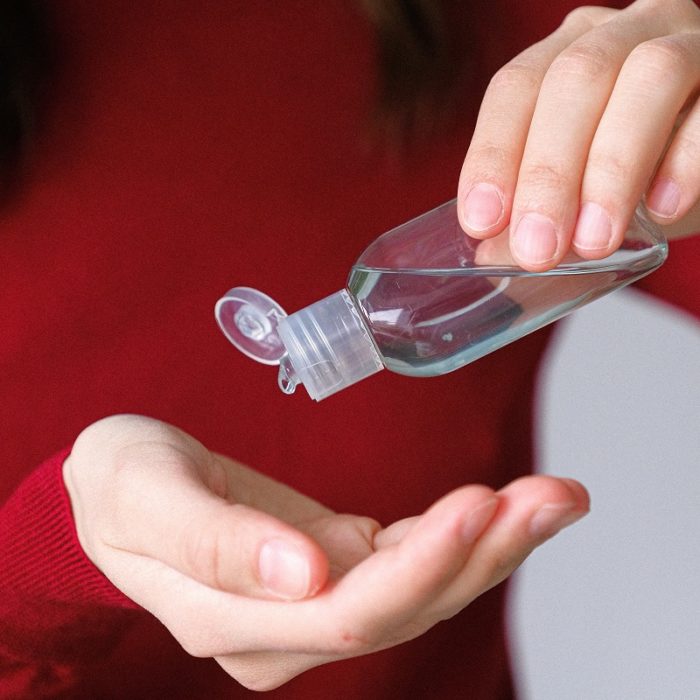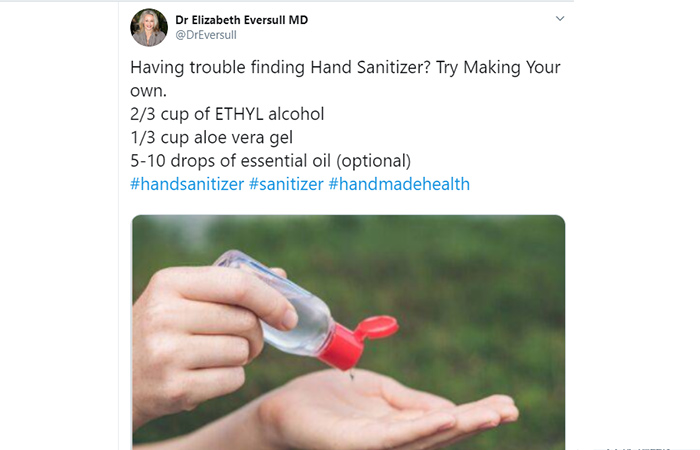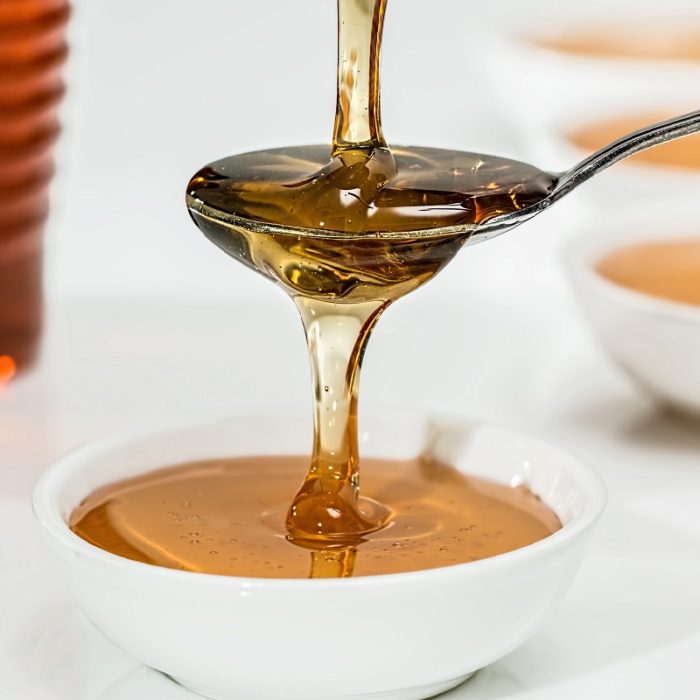DIY Hand Sanitizer: How To Make Your Own Sanitizer At Home

With people resorting to panic buying and clearing grocery store shelves of hand sanitizers, a lot of us are left with no choice but to prepare them at home to protect themselves from the novel coronavirus pandemic.
According to the Centers For Disease Control And Prevention, cleaning your hands often with a sanitizer that contains at least 60% alcohol is one of the most effective ways to avoid contracting COVID-19 (1).
Although sanitizers help inhibit the growth of certain types of germs, they do not eliminate all of them. The CDC suggests that washing hands with soap and water is more effective in killing the germs than sanitizers (2). But if soap and water are not available, use an alcohol-based hand sanitizer.
If you are having a hard time finding a sanitizer at your local grocery store, the good news is that you can now prepare your own hand sanitizer at home. Read on to know more.The World Health Organization has created a practical guide of DIY hand rub formulations with technical information about hand sanitizers (3). These recipes are meant for larger batches of sanitizers.
Ingredients That Help Kill The Germs
Make your own hand sanitizer at home using these ingredients:
- Isopropyl or rubbing alcohol or ethanol – It helps inactivate the virus (4), (5).
- Aloe vera gel – It has moisturizing properties (6). It can help replace some of the moisture stripped by alcohol.
- Essential oil (tea tree oil, or lavender oil, or cinnamon oil or rosemary oil or eucalyptus oil) – These oils exhibit antiviral and antibacterial properties (7), (8).
Note: As discussed above, your sanitizer must at least contain 60% alcohol to be effective against the virus. Since you are preparing the mix at home, aim to increase the alcohol level to at least 70% – 75%. A bottle of 99% isopropyl alcohol is highly recommended.
How To Make Your Own Hand Sanitizer At Home
This homemade sanitizer is not a 100% substitute for proper commercial sanitizer. Most of these ingredients have commonly accepted antiviral properties, but they have not been tested in a lab to work against coronavirus.
This sanitizer has 60% + alcohol content. However, this version is still not tested to have any effect against coronavirus. A tested version of DIY hand sanitizer is specified on the official website of the WHO (3).
Before trying this recipe, check with your healthcare provider. Also, do not use this sanitizer on children’s skin as they may be prone to more risks if used improperly.
Homemade Hand Sanitizer Recipe
Clean the place with diluted bleach. Wash your hands thoroughly and do not touch the solution until it is fully ready.
You Will Need
Ingredients
- ⅔ cup rubbing alcohol (99% isopropyl alcohol) (or) ⅔ cup of ethyl alcohol
- ⅓ cup aloe vera gel
- 5-10 drops of essential oil
Materials
- Mixing bowl
- Mixing utensil
- Funnel
- A clean bottle with a resealable lid or pump
What You Have To Do
- Pour all the ingredients in a bowl with a measuring spoon.
- Whisk the solution thoroughly to turn it into a gel.
- Use the funnel to pour the liquid into the empty bottle.
How To Store
- Store the solution in a small jar or a squeeze tube with an easy opening.
- You can also store it in a plastic bottle with a pump spray.
Dr. Elizabeth Eversull, an Integrative MD, shared a DIY hand sanitizer recipe on Twitter.

When And How To Use Hand Sanitizer (Tips To Remember)

According to the CDC, it is mandatory to sanitize your hands multiple times a day, especially before eating, after using the toilet, after coughing or sneezing, etc. Here are some simple steps to sanitize your hands thoroughly:
- Squirt a generous amount of sanitizer into your palm.
- Rub your hands thoroughly. Make sure to cover both your hands, including your fingers, the inner corners, fingertips, nails, etc.
- Dry your hands. After 20 seconds of rubbing your hands, your skin must have absorbed most of the sanitizer. If your hands are still wet, air dry them.
Now that you know how to use a hand sanitizer, let’s learn the difference between handwashing and hand sanitizer.
Hand Sanitizer Vs. Hand Washing – Which Is Better?
The major difference between a hand sanitizer and handwashing is that alcohol-based hand sanitizers don’t kill all types of germs. They may not get rid of hazardous chemicals, such as pesticides, and visible dirt and grime. On the other hand, washing hands with soap and water reduces the amount of all types of germs and gets rid of dirt, debris, and grime.
Hand sanitizers are a good option if you can’t wash your hands or don’t have access to water at the moment. They are quick, easy to use, and portable. Cleaning your hands properly is the best way to avoid getting infected or spreading germs.
The Final Word
Germs are everywhere! You can contract them through various sources. Following healthy hand hygiene is key to avoid getting sick and spreading the germs further. If you are finding it difficult to purchase hand sanitizers at your local stores, try this homemade hand sanitizer recipe and stay safe! However, health authorities recommend hand washing with soap and water over hand sanitizers.The following two tabs change content below.
































